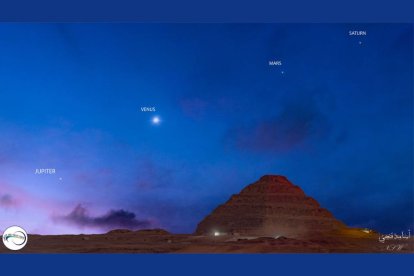The American continent, one of the most privileged to enjoy the "planetary parade"
The event, which took place during the early hours of Monday, allowed meteorologists to see Mercury, Mars, Jupiter, Saturn, Uranus and Neptune aligned.

(
This Monday, a planetary event occurred that occurs rarely over the decades: an astronomical parade. This phenomenon, visible from various points on Earth, allowed human beings living in the Northern Hemisphere to contemplate the alignment of six planets in our solar system.
In this way, those lucky ones who had the necessary equipment to do so were able to enjoy the so-called "planetary parade," that is, the alignment of Mercury, Mars, Jupiter, Saturn, Uranus and Neptune.
Not all of them were easy to spot. According to NASA, the human eye can only clearly perceive the Moon, Mars and Saturn while, for those who wanted to also see Neptune and Uranus, those planets furthest from Earth, it was necessary to use either binoculars or, better yet, a telescope. And the best time to enjoy this "astronomical parade" was between half an hour and an hour before dawn since the night allowed for better observation of this meteorological event, as detailed by the space weather agency in a news item prior to the event:
What is the "planetary parade"?
Despite the beauty of the phenomenon, Infobae warns that, in reality, it is all an optical effect. Thus, although from Earth it appears that the planets are aligned, in reality what happens is that their orbits approach the same side as the Sun, making it appear that they are all in a row when this should not be the case. Of course, unlike other phenomena of this magnitude, you can enjoy this "planetary parade" several times this year since, along with June 3, this event is also scheduled to be repeated on August 28 with the alignment of the same planets.
It will not be the only time it happens, since in 2025 the event will also be repeated up to three times: on January 18; on February 28 (where, in addition, the seven planets will align and not six) and August 29, 2025. Astronomical events that will join others that have already occurred throughout this year, such as the last total solar eclipse, and that allow experts to better understand the solar system in which we live.
RECOMMENDATION





















